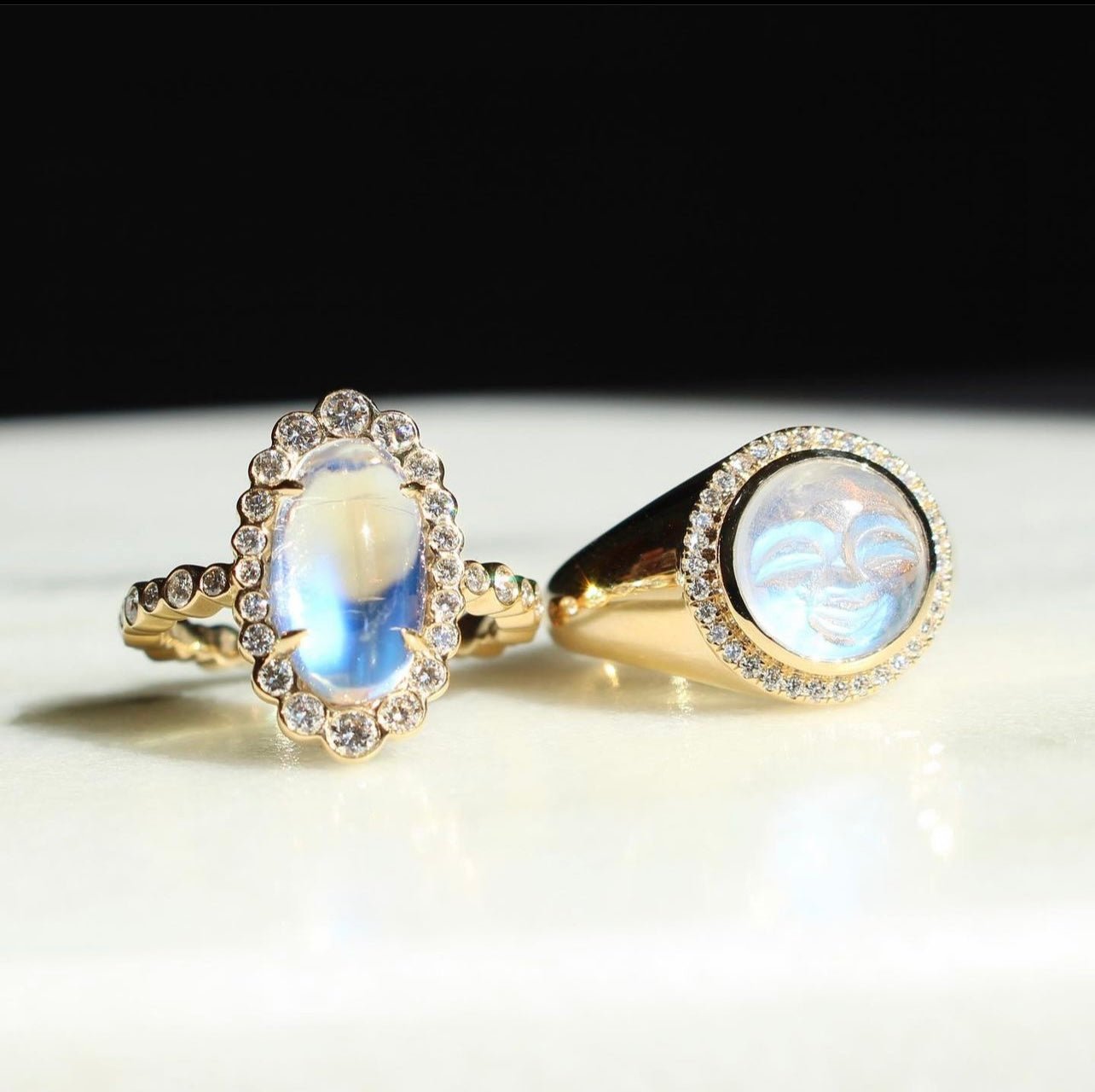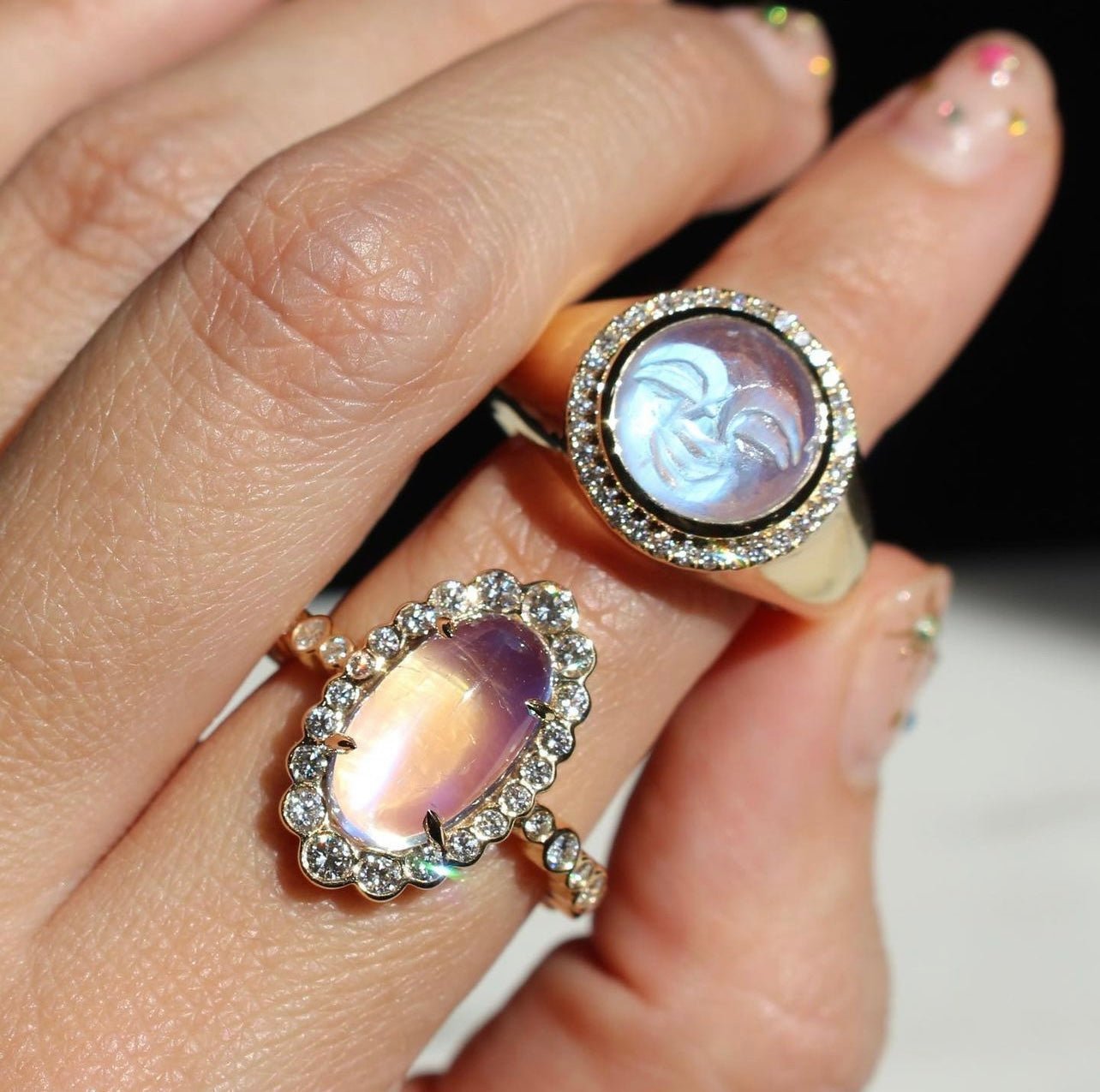An engagement used to have more to do with a dowry than true love. While dowries aren’t nearly as common as they used to be, remnants of traditions still percolate into the ceremonies we know and love today. In fact, the practice of “giving away the bride” or a father walking his daughter down the aisle is related to this tradition.
Nowadays, things have changed. Women have a say in the entire wedding process, and some even choose to pop the question to their beau! These social advancements have taken quite a while to come around.
Even still, there is something to be said for the comfort that customs can give us. Weddings typically come with a schedule and a rulebook for the planning process. Guidelines for the rehearsal dinner, ceremony, and reception can still come in handy to help couples plan their big day.
When it comes to traditions, we believe some of them can be enhanced. It's why we create such innovative, rare, and unique jewelry pieces with exotic gemstones.
Today, we’ll tackle the delicate situation that is traditional ring buying.
Choosing Your Own Path
Before we head straight to the history books, we must remind you that these are simply customs. These are not set in stone, or set in diamond, for that matter. Every couple is unique — just like their rings and ceremonies.
Ring buying traditions are worth looking into, but you are always free to break the status quo (as many engaged couples have been doing) and try out some new techniques.
Wedding Traditions and the Band
Here’s the low down on wedding band etiquette: it's pretty complicated. Just as stones are forged in mines and mountains, our traditions change shape over time.
We aren’t the first generation to have broken from the status quo. Traditions get muddled and blend together to create new customs.
We should first explain the difference in ring types used throughout this article. Terms like “engagement ring” and “wedding band” may sound similar, but they are actually quite different.
In Western society, an engagement ring is typically given to a woman during her proposal to her partner. She then wears it throughout the period between her engagement and her wedding day.
Wedding bands are exchanged during vows at the wedding ceremony itself and are often far less ornate than engagement rings because they are given to both partners. The bride’s wedding band usually sits flush with her engagement ring: a pair for life.
The oldest custom is for the bride and her parents to purchase the wedding band for the groom. As we mentioned before, this has a lot to do with the “giving away” of the bride.
What Is the History of Wedding Bands?
If you thought that male engagement rings were a newer trend, think again.
During the 16th and 17th centuries, Gimmel rings were a common symbol of commitment in Great Britain. Gimmel rings featured engravings depicting hands holding one another or the actual interlocking feature between two bands, symbolizing unity. These rings were worn by both the man and the woman during an engagement to relay their new status.
WWII ushered in a new sense of symbolizing commitment, with many American (and international) couples split apart by enlistments. This is where the modern tradition of exchanging rings at a ceremony began. Engagement rings became more popular than ever, as did the wedding band for men.
Couples Who Split the Cost of the Rings
Many couples tend to live before they are even engaged, sometimes for years at a time. With this modern approach, couples are likely to have shared finances or shared property. If you want to play it fair, equally dividing the price of both wedding bands is possible.
You can go to the jeweler together and choose what you want specifically. This is a more popular trend with engagement rings, as people can be very specific with what they want. You can also discuss an agreed-upon budget with your jeweler and brainstorm ways to fit your rings in your overall wedding or life budget.
This is also a great idea because some couples prefer their engagement ring to match the wedding band or even their wedding bands to complement one another.
Another way to include both partners in the ring shopping process is to agree that whoever pops the question is not responsible for purchasing their partner's wedding band too. This way, the financial burden is dispersed, and you may split the cost of the remaining band.
Price Points
If you are the one who ends up in charge of buying both wedding bands, or if you are simply paying for half, it is vital to know the key facts and figures. You can have as low a budget for a wedding as you want or have the most high-end extravaganza; you simply need to know where to look for what you’re buying.
The most illustrious wedding bands contain gemstones. This can include diamonds, one of the more popular inclusions, or even turquoise and garnet. The average price is somewhere around $1,800, but this is a bit of a conservative guess.
Gemstone-encrusted jewelry is worth a lot more in the long run, is excellent to pass down to future familial generations, and is excellent for personalization opportunities. Adding your birthstone and that of your spouse into your ring can make for a memorable gift.
On the lower end of the cost spectrum, we have palladium and tungsten rings. These materials average at $700 and $250, respectively. Palladium is a more modern metal that is usually a filler for certain types of gold. It is highly durable for a budget-friendly option. Tungsten rings can be gray, white, or black; this neutrality might just make your partner more keen on wearing one every day.
Gold wedding bands average at around $500, and they are typically seen on men and women across the world. Gold tends to match everything, classic and classy. It also has a notable value that tends to appreciate over time.
If you want to treat your spouse to something nice, 14k or 18k gold is the way to go. Feel free to explore white and rose gold rings as well for a specialized touch.
Alternatives
If you’re not super into the idea of wedding bands, or even engagement rings, there are still so many ways to show your love for your betrothed daily. You can book an appointment with a local tattoo artist and add a simple line around your left hand’s ring finger. This is an even more permanent commitment and a one-time fee — you’ll never have to pay for repairs.
If you like what a wedding band represents but you’re not big on jewelry, check out silicone and wooden wedding rings. The prices are low, and the material is flexible, allowing you to take them off and not have to worry about where you put them down. They are easily replaced and can even be repurchased in different colors to match different outfits or events. However, these will likely not become heirloom items or increase in value.
Gemstone Wedding Bands
At Mark Henry Jewelry, nothing matters more to us than making your wedding pieces as memorable and worth the investment as possible. We offer a line of exotic gem-encrusted engagement and gemstone wedding rings, both of which are versatile enough to be worn on their own as well. We believe that exotic gemstones compare to diamonds and add a layer of luxury to your wardrobe.
For example, consider our Quarter Cluster Signet Ring as a fantastic male wedding band option. This 18kt gold band is encrusted with 0.75ct of round alexandrite, the magnificent color-changing gemstone previously worn by Russian royalty in the 19th century. With a nod to the traditional, the ring also includes 0.56ct of round white diamonds on its borders.
Make it Personal
The best wedding band is one that you want to put back on each morning. We suggest engraving a special message in both bands. You can keep the words a surprise, so when you exchange rings at your wedding, they are just as precious as your vows.
Engraving dates on your rings can also have a very significant meaning. Maybe you celebrate the day you first met each year, or perhaps you want to include a reminder for your wedding anniversary (never have another excuse to forget!). This is a simple but beautiful way to keep something between just the two of you.
Remember the love you are honoring with your wedding bands, and keep it in mind while shopping, no matter who swipes their card. A couple is a partnership that can truly never be broken.
Sources:
The Groom's Guide to Men's Wedding Bands | Woman Getting Married
Serious Question: Who Buys the Wedding Bands? | The Knot
Giving Away the Bride: What to Know About the Tradition | Brides




